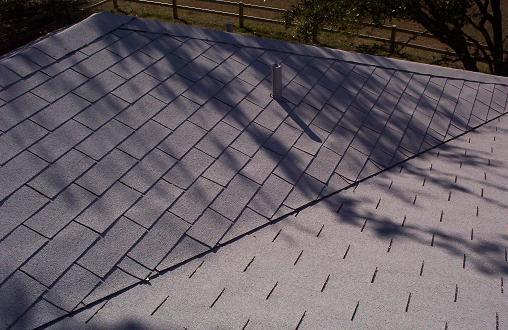Many houses across the United States have asphalt shingles as the primary roofing material; they have a life expectancy of approximately twenty years. There are several essential factors to be considered and trying to compute an accurate service life is difficult as there are many things that could cause premature failure, all of which should be promptly addressed to limit wear as well as complete failure of the structure.
a life expectancy of approximately twenty years. There are several essential factors to be considered and trying to compute an accurate service life is difficult as there are many things that could cause premature failure, all of which should be promptly addressed to limit wear as well as complete failure of the structure.
Frequently Encountered Problems
Some of the red flags to look for with asphalt shingles no matter how they are installed or the architectural design of the roof include: granulation; curling; premature cracking; blistering; missing shingles; cupping and buckling; rotting; and moss or algae growth.
Some of the problems listed above are more serious than others; however, all of them need attention before water penetrates and damages the essential underlying structures.
Life Expectancy
Manufacturers establish a certain service life for their asphalt shingles. Typically, this life expectancy ranges anywhere from fifteen years to a maximum of twenty years, depending on the durability and other factors that contribute to failure during use. Three of the primary factors that affect the potential life expectancy of this material are: the manufacturing process; the installation process; and weather conditions.
- Manufacturing – The quality, design, thickness, composition, and color all play a vital role in expected service life. The thicker the material, the more durable it is while the lighter the color, the more it deflects harmful ultraviolet rays from the sun. Manufacturing defects can occur which could cause thermal splitting and premature material cracks.
- Installation – The complexity of the design, pitch, and ventilation can contribute to material failure. Designs where there is much penetration such as numerous nail holes, multiple valleys, drainage, and the amount of materials used are more likely to experience premature failure and leakage. In addition, the degree of inclination can contribute to failure. The steeper the pitch, the longer the expected lifespan because steeply pitched structures allow for more rapid runoff of water as compared to a lower sloped roof.
- Exposure – Adverse climate conditions has a great affect on asphalt shingles. Ultraviolet rays and a colder environment can wear the substrate prematurely, decreasing its service life. Hail can also cause a significant amount of damage to a roof, creating small depressions that lead to problems with the substrate and allow water to penetrate. Rain that falls for an extended period of time can wash away shingle granules and degrade the tabs. This is evident by traces of the aggregate found in the eaves troughs. Strong wind can rip shingles from the structure.
There are several issues that asphalt shingles can encounter to decrease an anticipated service life, including manufacturing, installation, and weather extremes. If these factors are detected early enough, some of the damage can be averted and the service life extended. Knowing the potential for such problems to occur and watching for them can definitely help determine how long a roof will last!
If Looking for a Brenham Roof Company Call Schulte Roofing Today!
Does your roof have any of the red flags listed above and you need to contact a Brenham roof company to help with asphalt shingles problems? Call Schulte Roofing at 800-367-7663 who can help all Brenham and Washington County customers with any asphalt shingle problems!
